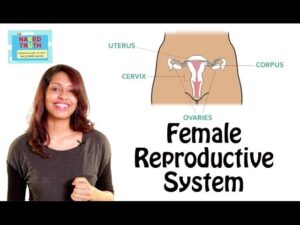✪✪✪✪✪ http://www.theaudiopedia.com ✪✪✪✪✪ What is BONE REMODELING? What does BONE REMODELING mean? BONE REMODELING meaning – BONE REMODELING definition – BONE REMODELING explanation. Source: Wikipedia.org article, adapted under https://creativecommons.org/licenses/by-sa/3.0/ license. SUBSCRIBE to our Google Earth flights channel – https://www.youtube.com/channel/UC6UuCPh7GrXznZi0Hz2YQnQ Bone remodeling (or bone metabolism) is a lifelong process where mature bone tissue is removed from the skeleton (a process called bone resorption) and new bone tissue is formed (a process called ossification or new bone formation). These processes also control the reshaping or replacement of bone following injuries like fractures but also micro-damage, which occurs during normal activity. Remodeling responds also to functional demands of the mechanical loading. In the first year of life, almost 100% of the skeleton is replaced. In adults, remodeling proceeds at about 10% per year. An imbalance in the regulation of bone remodeling’s two sub-processes, bone resorption and bone formation, results in many metabolic bone diseases, such as osteoporosis. Bone homeostasis involves multiple but coordinated cellular and molecular events. Two main types of cells are responsible for bone metabolism: osteoblasts (which secrete new bone), and osteoclasts (which break bone down). The structure of bones as well as adequate supply of calcium requires close cooperation between these two cell types and other cell populations present at the bone remodeling sites (ex. immune cells). Bone metabolism relies on complex signaling pathways and control mechanisms to achieve proper rates of growth and differentiation. These controls include the action of several hormones, including parathyroid hormone (PTH), vitamin D, growth hormone, steroids, and calcitonin, as well as several bone marrow-derived membrane and soluble cytokines and growth factors (ex. M-CSF, RANKL, VEGF, IL-6 family…). It is in this way that the body is able to maintain proper levels of calcium required for physiological processes. Thus bone remodeling is not just occasional “repair of bone damage” but rather an active, continual process that is always happening in a healthy body. Subsequent to appropriate signaling, osteoclasts move to resorb the surface of the bone, followed by deposition of bone by osteoblasts. Together, the cells that are responsible for bone remodeling are known as the basic multicellular unit (BMU), and the temporal duration (i.e. lifespan) of the BMU is referred to as the bone remodeling period.

What is BONE REMODELING? What does BONE REMODELING mean? BONE REMODELING meaning & explanation
- Post author:
- Post published:May 10, 2021
- Post category:Uncategorized
- Post comments:0 Comments
You Might Also Like

How Much Protein Do You Need Per Day? | Health and Fitness Tips | Guru Mann

Vascular Surgery Video – 5

Cialis (Tadalafil) – Men’s Health

What is Rheumatic Heart Disease (RHD)

Pronounce Medical Words ― Silymarin

Concussion / Traumatic Brain Injury (TBI)

ON Glutamine Powder Review | Body Spartan Recommendations

How To: Bands Preacher Curls (Biceps, Arms)

Excretory System Parts and Functions Animation video for kids

Otorhinolaryngology Video – 1

Cardio-Thoracic Physiotherapy Video – 8

Endocrine System: Hormones

HGH, Growth Hormones & Plant Hormones Video – 2

How to Check Your Blood Sugar

Ergogenic Aids

Abscess Basics: Part 2a

Addictive Substances Nutrition Video – 2

Some serious side effects of Metformin

Suicide Sprints Conditioning Drill

Pathology Video – 2

The side-effects of vitamin and mineral suppliments tablets

Things you must know before taking Glutamine Supplements | HINDI

8.2.7 Gonads – Structure and Function

What Is Vitamin C? | Vitamins

Fencing Video – 1

Insulin and Glucagon

Pharmacokinetics: Vd, Clearance, Half-life: Calculation Drug Distribution, Elimination, Rate

How Do Bodybuilders Get Lean Before Competition?

physical symptoms of high blood pressure

How Accutane Works for You

How to Do Abdominal Exercises : Combo Crunch Abdominal Exercises

First Aid Video – 4

wbc count

Cardiac Arrest ECG

Sildenafil Citrate

Enalapril Nursing Considerations, Side Effects, and Mechanism of Action Pharmacology for Nurses

Optometry Video – 1

Tricep Rope Extension | Tricep Exercise #3 | Sangram Chougule Fitness

How to Warm Up | Running

#Adjustment#Flexibility Motivational Cartoon video

Excretory Reproductive System And Asanas Video – 3

